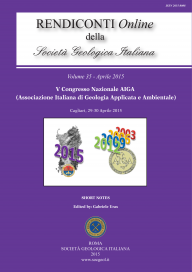
PSI technique for quantitative hazard and risk assessment of landslides
Veronica Tofani (a), Ping Lu (b), Filippo Catani (a) & Nicola Casagli (a)
(a) Department of Earth Sciences , University of Firenze, Via La Pira, 4, 51120, Firenze, Italy. E-mail: veronica.tofani@gmail.com
(b) College of Surveying and Geo-Informatics, Tongji University, Siping Road 1239, Shanghai, China.
Volume: 35/2015
Pages: 296-299
Abstract
Preparation of reliable landslide hazard and risk maps is crucial for hazard mitigation and risk management. In recent years, various approaches have been developed for quantitative assessment of landslide hazard and risk. However, possibly due to the lack of new data, very few of these hazard and risk maps were updated after their first generation. In this study, aiming at an ongoing assessment, a novel approach for updating landslide hazard and risk maps based on Persistent Scatterer Interferometry (PSI) is introduced. The study was performed in the Arno River basin (central Italy) where most mass movements are slow-moving landslides which are properly within the detection precision of PSI point targets. In the Arno River basin, the preliminary hazard and risk assessment was performed by Catani et al. (2005) using datasets prior to 2002. In this study, the previous hazard and risk maps were updated using PSI point targets processed from 4 years (2003–2006) of RADARSAT images. Landslide hazard and risk maps for five temporal predictions of 2, 5, 10, 20 and 30 years were updated with the exposure of losses estimated in Euro (€). In particular, the result shows that in 30 years a potential loss of approximate €3.22 billion is expected due to these slow-moving landslides detected by PSI point targets.
Keywords
Slow-moving landslide, Landslide hazard and risk assessment, Persistent Scatterer Interferometry (PSI) technique, Remote sensing.
Get Full Text